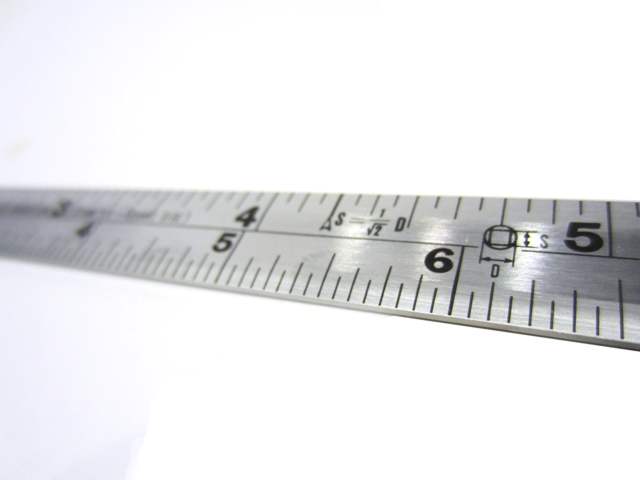This post is titled:
Toolsday: Sashigane
As a 'congratulations' present to myself for actually completing the "Camp Gate" a month ago, I decided to invest in some actual Japanese tools. I bought five things total from Hida Tools in Berkeley, CA, and one of those things was this carpenter square.
The sashigane is a simple suqare with no moving parts, but the overall object has a high degree of sophistication. It's very flexible, and the eight available edges are marked off in different scales.
This is a relatively small sashigane, only about a foot long on the long leg. I wanted to be sure it would fit in my toolbox with my other tools. It should be long enough for most of my uses. This sashigane is in inches, but they are frequently available in centimeters and in sun which is the archaic Japanese unit that is about one tenth of a foot. (Really, one sun is exactly one tenth of a shaku which is about 1.091 feet or something.)
One end of the long leg is marked so you can use it as a depth gauge. This only works for holes and slots that are large enough to fit, though.
One edge is marked in kakume-inches. Kakume is a scale based on the square root of two (the length the hypotenuse of a unit isosceles right triangle), so each mark is actually about 1.414 inches. If you use this scale to measure the diameter of a log, it will tell you the largest square beam you can cut from that log. It's also often used to create proper aspect ratios in things like shoji screens. The rectangles between the kumiko crossbars are often measured in inches by kakume, so, like, 3 inches tall by 3 kakume (4.242 inches) wide.
Another edge is marked in marume-inches. Marume is a scale based on pi (which you probably know is the ratio between a circle's diameter and circumference), so each mark is actually about 3.14 inches. If you use this scale to measure the diameter of a log, it tells you the circumference of the log.
Here's how you use the sashigane when you're trying to measure in from the edge of a board. You take advantage of the flexibility to bend the long leg into a curve that you press up against the side of the board (or box in this case). This also tilts the short leg so that the inner edge presses down against the surface for accurate measurement and marking.
[Please note that these Toolsday posts are independant reviews of tools that I purchased. I do not receive any payment for doing these reviews. I did receive a discount from Hida, but it was for being a student of my teacher and these reviews were not a condition of that discount.]
2013.08.13 at 12:00am EDT
All text and graphics copyright © 2007-2013 Elliott C. Evans except where otherwise noted.
[Visit my web site] [Subscribe via RSS]






